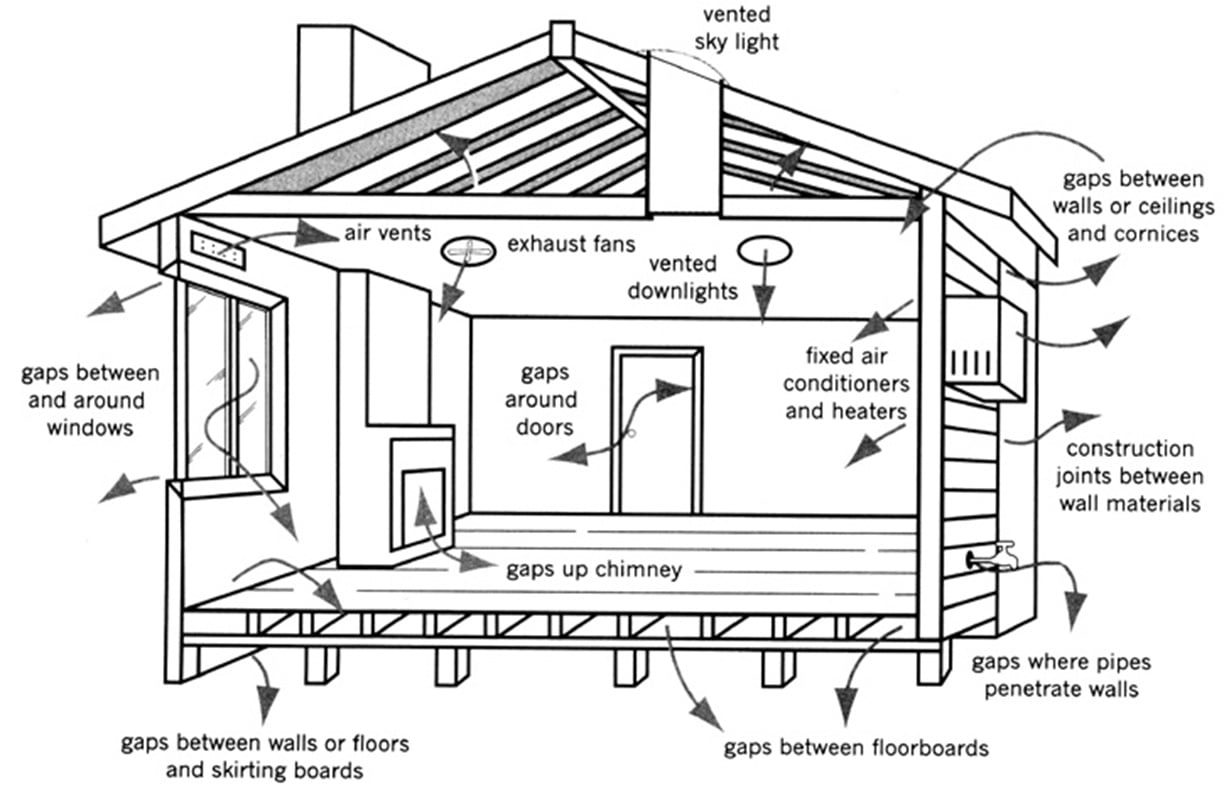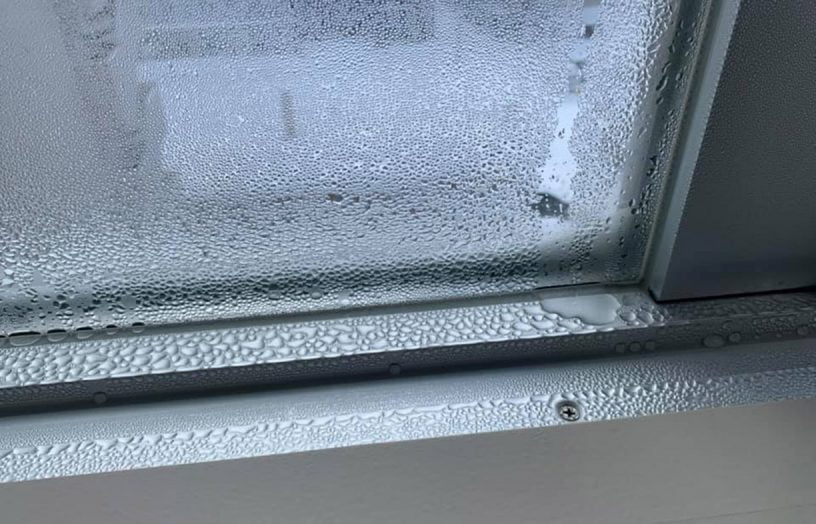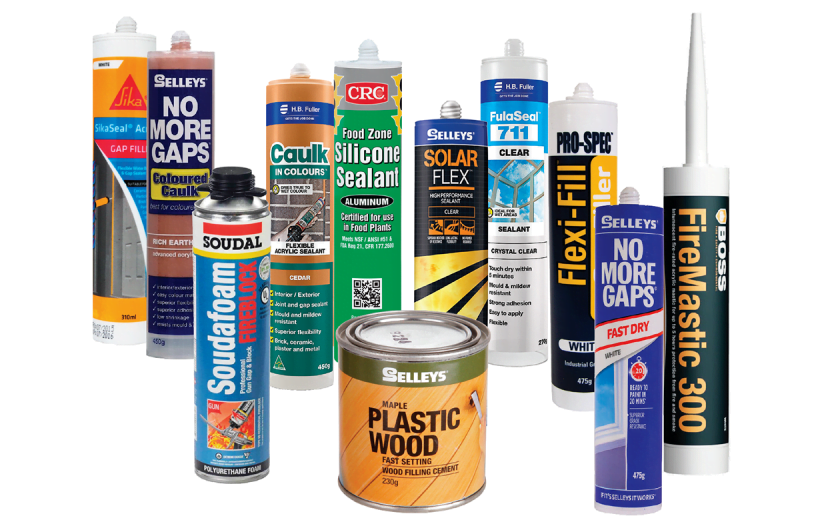How to stop draughts at home

Find out how to stop draughts and keep your house warm this winter.
Australian homes have traditionally been so ‘leaky’ that it is estimated that if you added up all the areas where air leaks occur you would have the equivalent of a one square metre hole in your wall. In winter, leaks allow your hard won heat out and the winter cold in; in summer, they allow the hot air from outside in and, if you air condition, that expensive cool air literally slides out the door.
Draughts are sneaky things and can be responsible for up to 25 per cent of your heating costs – a similar amount if you air condition – and serve to reduce your home’s level of comfort. They can be difficult to locate if you don’t know how and tricky to seal properly. You can change all that easily, however, by following some simple steps to stop draughts.
Finding leaks
If you’ve got an old cassette tape you can reuse it as your own personal draught detector. (Note: this is a bit destructive for the tape but, seriously, you were probably never going to listen to it again anyway!) Cut out a piece of tape 150–200 millimetres long; now hold this around your windows, doors, cornices and skirting boards. The tape will flutter wildly in the presence of a draught. Hint: if you don’t have a cassette or would rather not destroy one, watching the smoke from a lit incense stick works as well. Both methods work especially well on windy days.
Air can also circulate via vents, between floorboards, and through exhaust fans, skylights and downlights. Unless you have an unflued gas heater there is no need for the air vents common in older homes and blocking them up makes a huge difference. Those vents hearken back to the days of open fireplaces and kerosene heaters.
If you think you may have leaks but don’t have the time to find them (or are not the handy person type), you can employ companies that are well versed in how to find leaks, what to do about them and how to fill that ‘hole in your wall’.
Draught proofing by design
Draught proofing is best dealt with at the time of building, so ensure your designer and builder are engaged with trying to minimise draughts and you will reap the benefits from the day you move in. Don’t be concerned about being too efficient. Unless you do a superhuman job, the simple act of coming and going will allow enough air changes to keep your home healthy. Indeed, in Europe they are now aiming to almost hermetically seal their homes and have elaborate ways to ‘change the air’ while keeping the heat in. They even go so far as to pressure test to find leaks!
DRAUGHT PROOFING RETROSPECTIVELY
If you’re not in the design/build stage, there are plenty of ways to draught proof a home retrospectively. You can choose to outsource this to a professional or tackle the problem yourself.
Whichever option you choose, the outcome you desire is a snug home with well sealed spaces that you can shut off from one another. If you can make airlocks between inside and outside spaces, so much the better – this will minimise your heated/cooled air loss. Door ‘snakes’ or ‘sausages’ are making a comeback for this reason. They work well velcroed to the inside face of the door or when double-sided with a joiner that slips under the bottom of the door. This avoids having to go to the trouble of resetting them when leaving or entering a room.
SEALING DOORS. When sealing doors, extra care needs to be taken with external doors. If sealing them yourself, follow the instructions on the door sealer packaging carefully. There are even seals that can withstand a certain amount of storm surge – check your local hardware store for details.
FIT A DRAFTSTOPPA. Fitting this hood to your exhaust fans helps seal the home from the ceiling space – these work by using the force of the fan to lift covers up, with gravity keeping things sealed otherwise. You will need to access your ceiling space in order to fit this product.
Block off chimneys when not in use. If you can hear the wind whistling, that’s the sound of your money burning!
SEAL OFF SKYLIGHTS. This can be as simple as fitting a sheet of clear plastic at the bottom of the skylight shaft, or you can employ professional solutions.
CONSIDER PELMETS. Fitting pelmets to your windows stops the air circulating down between the window and the curtain. Pelmets can be painted, wallpapered or even upholstered to make them more attractive. Leftover material from the curtains could be used for this.
DOWNLIGHTS. Downlights can be a source of ‘leakage’ if they are vented or gimbal types. Remove downlights from your ceiling and bring the fixture within the room ‘envelope’. Every place you have a downlight, you have a break in your insulation.
Whether you ensure draught prevention is part of the design and build process, or choose to fix leaks retrospectively yourself or through a professional, before you know it you will be reaping the rewards of lower energy use without sacrificing your comfort. Let’s face it: using energy wisely just makes good sense!
More on draughtproofing
 Efficient homes
Efficient homes
Building for a changing climate
Are we building homes for the future, or for the past? Rob McLeod investigates how climate change is impacting home energy ratings and the way we build our homes.
Read more Efficient homes
Efficient homes
Condensation management
It’s important to consider both ventilation and moisture control in order to avoid condensation problems. Jenny Edwards recommends a holistic approach.
Read more Buyers guides
Buyers guides
A draught sealing buyers guide
Draughts can make your home far less comfortable than it needs to be, particularly in winter. Sealing them up is one of the simplest things to do for an energy-efficient home. Find out where the gaps are and how to fix them in our first-ever draught sealing buyers guide.
Read more

